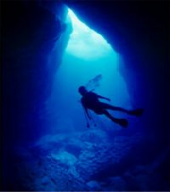====SAIPAN====
Saipan (IPA: [sa?'pæn], [sa?'p?n], or ['sa?pæn] in English) is the largest island and capital of the United States Commonwealth of the Northern Mariana Islands (CNMI), a chain of 15 tropical islands belonging to the Marianas archipelago in the western Pacific Ocean (15°10’51â€N, 145°45’21â€E) with a total area of 115.39 km² (44.55 sq mi). The 2000 census population was 62,392 [1].Located at latitude of 15.25° north and longitude of 145.75° east, about 200 km (120 mi) north of Guam, Saipan is about 20 km (12.5 mi) long and 9 km (5.5 mi) wide. It is a popular tourist destination in the Pacific.The western side of the island is lined with sandy beaches and an offshore coral reef which creates a large lagoon. The eastern shore is composed primarily of rugged rocky cliffs and a reef. Its highest point is a limestone covered mountain called Mount Tapochau at 474 m (1,554 ft). Many people consider Mount Tapochau to be an extinct volcano, but there are no volcanic features located in this area. To the north of Mount Tapochau towards Banzai Cliff is a ridge of hills. Mount Achugao, situated about 2 miles North, has been interpreted to be a remnant of a stratified composite volcanic cone whose Eocene center was not far north of the present peak.Besides English, the indigenous Chamoru language is spoken by approximately 19 percent of the inhabitants. The current governor of the CNMI is Benigno Fitial, who is the successor of Juan Babauta.====HISTORY====
Saipan, along with neighboring Guahan, Rota/Luta, Tinian, and to a lesser extent smaller islands northward, was first inhabited around 2000 B.C.E. The Spanish were the first Europeans to encounter the Chamoru, and eventually annexed Saipan as part of its claim to the Marianas. Around 1815, many Carolinians settled Saipan during a period when the Chamoru were imprisoned on Guam, which resulted in a significant loss of land and rights for the Chamoru natives. German rule began in 1899 and lasted until 1914, when the Japanese took over the island under a League of Nations mandate. The Japanese developed both fishing and sugar industries, and in the 1930s garrisoned Saipan heavily, resulting in nearly 30,000 troops on the island by 1941.On June 15, 1944 during World War II, U.S. Marines landed on the beaches of the southwestern side of the island, and spent more than three weeks fighting the battle of Saipan to secure it from the Japanese, an event which was dramatized in John Woo's 2002 film "Windtalkers." It should be noted, however, that the movie was not filmed on Saipan and does not accurately reflect the island at that time. For instance Garapan, which was its de facto capital during that period of the Japanese era is portrayed as a rural farming community, when in fact it was a fairly large town. Garapan is currently still the largest village and the center of the tourism industry on the island.The CNMI joined the USA in November 1986. During negotiations, it was suggested by the USA that the CNMI be exempted from certain federal laws, including some concerning labor and immigration. The CNMI negotiation team and the USA agreed to this. As a result, dozens of hotels opened and tourism became the island's main economic engine. Garment factories which employed thousands of alien workers also opened. As of November 2006, ten remain in existence. The working conditions and treatment experienced by employees in these factories have been the subject of controversy and criticism (see below). They supply the U.S. market with low cost garments exempt from US tariffs, and goods manufactured in U.S. Commonwealths and Territories, including Saipan, may be labeled "Made in the USA". However, since 2002, many if not most are now labeled "Made in CNMI, USA" or "Made in Northern Mariana Islands, USA".====AGRICULTURE AND FLORA====
Undeveloped areas on the island are covered with sword grass meadows and dense, dry-forest jungle known as Tangan-Tangan. Coconuts, papayas, and Thai hot peppers--locally called "Donne Sali" or "Boonie Peppers"--are among the fruits that grow wild. Mango, taro root, and bananas are a few of the many foods cultivated by local families and farmers. Sportfishing is excellent offshore, with numerous small boats catching tuna, wahoo, billfish and many other species.====TRAVEL====
Travel to and from the island is available from several airlines via Saipan International Airport. A ferry also operates between Saipan and its smaller neighboring island 5 miles to the south, Tinian. Taxis are available. There is no public transportation system.====OTHER ISSUES====
Despite an annual rainfall of 80-100", the Commonwealth Utilities Corporation (CUC), the local government-run water utility company on Saipan, is unable to deliver 24-hour-a-day potable water to its customers in certain areas. As a result, several large hotels use reverse osmosis to produce fresh water for their customers. In addition, most homes and small businesses augment the sporadic and sometimes brackish water provided by CUC with rainwater collected and stored in cisterns.Saipan also has a place in many Irish people's minds, after "The Saipan Incident" which took place before the 2002 FIFA World Cup.
Layout Provided By FreeCodeSource.com - Myspace Layouts
